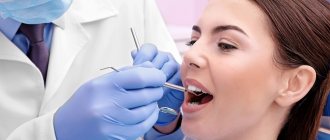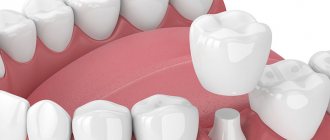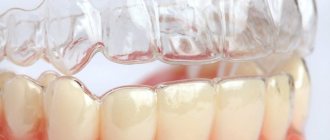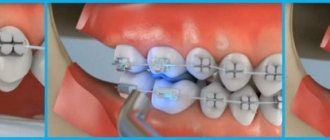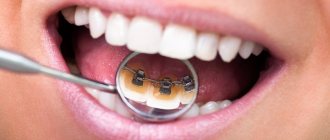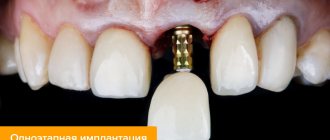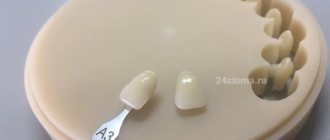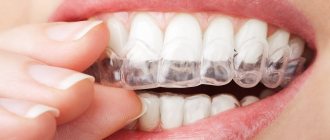Timely detection and treatment of dental diseases is considered a necessary and important condition for maintaining dental health. Even with careful daily oral hygiene, no one can be protected from the development of severe diseases of the teeth and gums, which a preventive examination at the dentist will help identify, because at the initial stage the disease can develop almost asymptomatically.
Experts strongly recommend undergoing a professional examination every six months, even without visible dental problems. Many people are interested in the question: Why exactly after six months? Based on numerous studies, scientists have concluded that this period is optimal for most oral diseases to begin their clinical manifestation. Therefore, they are easy to diagnose and treat because they are in the primary stage of development.
Of course, today the level of dental care is very high, which makes it possible to restore even severely damaged teeth and cope with any ailments of the oral cavity. However, it is better to prevent the disease than to treat it later in a long and tedious manner. Preventive dentistry is designed to recognize pathology in advance and eliminate it as soon as possible.
What is a dental examination?
During the examination, an experienced dentist-therapist, having the appropriate knowledge and the necessary tools, will pay attention to even the slightest changes in the oral cavity, and if pathologies are detected, he will take measures to eliminate the disease.
External inspection includes:
- the condition of the gums is assessed to determine the prognosis of possible diseases;
- determining the correct bite;
- mobility and loosening of teeth is eliminated;
- the condition of previously installed fillings is assessed;
- the enamel of the teeth is examined for caries damage;
- the integrity of dentures and crowns is checked;
- An X-ray examination may be performed (when an image of the teeth is necessary).
After the examination, the doctor makes a conclusion about the presence or absence of dental diseases, and issues recommendations regarding preventive measures or treatment.
What does the dentist do during the examination?
If there are no complaints, the initial examination proceeds according to the standard plan.
Visual assessment. The doctor examines the crowns, gums, mucous membranes (inner surface of the lips, cheeks), palate, checking:
- the presence of soft plaque and hard deposits on the enamel and in the gum pockets. Tartar accumulation indicates ineffective hygiene and requires professional cleaning. It is removed to check that there are no demineralized areas or caries underneath;
- general condition of the enamel: its color, transparency, gloss, presence or absence of mechanical defects. During examination, the doctor can identify chips, wedge-shaped defects, erosion, demineralization;
- signs of gum inflammation: swelling, discoloration, thickened areas, ulcers, etc.;
- condition of the mucous membranes (assessment of symptoms of gingivitis, traces of frequent mechanical injuries, burns, irritation or inflammation);
- condition of the palate, tongue (signs of injury, plaque deposits, traces of inflammation, erosion).
The color of the enamel is assessed separately. Its changes may indicate pulpitis (becomes gray), the use of certain medications (the shade changes to yellow or pink, may require bleaching), demineralization or caries in the stage of a white or dark spot (enamel lightens, loses its gloss, and then darkens, may turn brown or almost black).
Probing. It is carried out to control the strength of the enamel and evaluate the surface of the crowns. For this, a special tool is used - a probe. Such diagnostics allows us to identify caries, determine its stage, and the degree of tooth destruction. Probing also helps to diagnose non-carious lesions: fluorosis, hypoplasia, enamel erosion. It is carried out both for healthy and already filled teeth. If the crown has been restored, using a probe you can identify secondary caries and assess the condition of the fissures on the chewing surfaces. The tool should be blunt, angular, with a notch at the end. Probing is painless: the dentist simply runs a blunt end over the surface of the crowns, assessing the smoothness or roughness of the enamel and the degree of its hardness. The same technique is used to control gum pockets. The end of the probe is inserted into the groove behind the edge of the gum on all four sides of the crown. The immersion depth of the tool should not exceed 1 mm. If it goes deeper, the gum pocket is enlarged and this may indicate periodontal disease.
Using a probe, the gaps between your own tissues and the edges of the fillings are additionally checked. If they are enlarged (there is a noticeable joint that can be felt when the instrument is passed over the crown), this may require retreatment. When probing, the doctor can detect softening of dentin under the chewing surface, deposits of tartar on the neck of the tooth, under the gingival margin.
Palpation. It is carried out to assess the condition of the periodontium and identify hidden inflammation. With this diagnosis, the tooth is moved with tweezers in different directions, assessing its movement in the alveolus and how much it can move. If even with a slight force the crown moves, this indicates inflammation and swelling of the tissue. They can occur after injury, with periodontitis, periodontal disease, and periodontitis.
Additionally, they check in which directions the crown moves (only in one, two, three, in any direction, vertically, with the possibility of rotation, scrolling around the axis). When performing palpation, the doctor evaluates the patient’s sensations (is there any pain, sensitivity, during which movement of the crown is the pain most intense). When the tooth is rocked, bloody or purulent discharge may appear; the doctor may detect swelling or compaction, and this also helps to make a diagnosis. Traditional palpation (palpation) is carried out for the gums, inner surface of the cheeks and lips, if inflammation or other pathology is suspected.
Percussion. This is tapping the crowns with a probe handle or tweezers. The movements should be light, each tooth is tapped on the sides and on the top surface. The appearance of pain with a horizontal blow may indicate periodontitis, with a vertical blow it may indicate inflammation of the nerve or pulpitis. By assessing during percussion exactly in which places, during which tapping pain appears, and how severe it is, the doctor can make a preliminary diagnosis.
In some cases, radiography may be required during the initial examination. It helps to assess the condition of bone tissue, roots, and the filling density of the root canals if the tooth has already been filled.
What problems can be identified promptly during a dental examination?
If a visit to the dentist is postponed for an indefinite period, then existing problems may begin to progress, as a result of which more time, effort and money will be spent on eliminating them.
The main dental diseases that are identified during examination in the dental chair include:
- Caries. If caries forms at an early stage, it is possible to cure it in one visit to the dentist. If treatment is not carried out in a timely manner, common complications such as pulpitis and periodontitis may occur, which complicates the preservation of the tooth.
- Gingivitis. Due to the formation of tartar and plaque, this disease begins to progress, which in turn can cause periodontitis, in which inflammation of the soft tissues around the tooth occurs, the ligament of the root and bone is disrupted, and the patient may lose the tooth.
- Periodontal disease. This disease manifests itself in the gradual destruction of periodontal tissue, which can lead to the loss of healthy teeth.
As we can see, the importance of the examination cannot be underestimated; it serves as a kind of starting point for drawing up a further action plan to maintain oral health.
By signing up for a preventive examination, you will receive competent advice and find out all the answers to questions that are of concern to most patients about proper oral care:
- which brush and toothpaste is right for you;
- Are you brushing your teeth correctly?
- what additional hygiene products should be used for prevention purposes;
- how to properly use an irrigator, floss, etc.
Also, if necessary, the dentist can prescribe a number of preventive measures, such as:
- Tartar/plaque removal procedure;
- whitening;
- fluoridation;
- fissure sealing, etc.
Don’t wait until dental problems make themselves known and begin to bother you, because it is much easier to set aside time for a professional examination than to spend days, and sometimes even whole weeks, on grueling treatment.
Types of diagnostics in dentistry
In most cases, the therapist diagnoses the snake during a visual examination, but for some diseases of the oral cavity, additional examination may be necessary.
- X-ray diagnostics is the study of the internal structures of the dental system using x-rays.
- Luminescent diagnostics – detection of pathologies of the oral cavity using ultraviolet radiation.
- A bacteriological study is carried out to identify the causative agent of inflammation in the oral cavity.
- Stomatoscopy is an examination of the oral mucosa under multiple magnification, etc.
How does plaque affect the health of the oral cavity?
The development of many dental diseases is associated with the appearance of plaque. Harmful bacteria and their decay products have a detrimental effect on the enamel. Over time, plaque hardens and leads to the formation of tartar, which not only causes aesthetic problems, but also destroys the enamel structure and affects the health of the gums. And constantly multiplying microbes and bacteria provoke inflammatory processes and contribute to the progression of the focus of caries development. By causing bleeding and inflammation of the gums, pathogenic bacteria can cause the loosening and subsequently even loss of completely healthy teeth.
During an examination, an experienced dentist may recommend that the patient undergo a procedure for removing tartar and plaque to improve the health of the oral cavity and improve its general condition.
Effective measures to prevent the formation of plaque and tartar include:
- thorough oral hygiene;
- regular dental examinations;
- teeth cleaning at the dentist.
Probing
To carry out probing and visual examination, the dentist uses an angled probe that has a notch at the end; it must be blunt.
To determine the degree of roughness, the doctor runs an instrument over the surface of the enamel:
A healthy tooth has a smooth surface, but if the tooth is affected by caries, the enamel surface will be rough. The doctor is obliged to check the condition of the periodontal pocket; to do this, he inserts a probe into the gingival groove on four sides of the tooth; if the probe sinks to a depth of 1 mm, then the pocket is healthy. If the immersion is much deeper, this may indicate that the periodontium is atrophied, and this may be caused by pathology.
Atrophied periodontium caused by root caries
Symptoms of the carious process are the following: the size of the gap between the tooth and the filling is increased, the dentitis under the chewing surface is too soft.
During an initial visual examination, it is very difficult to detect tartar deposits on the neck of the tooth, which is located in the periodontal pocket, but this can be detected through probing. The occurrence of periodontitis and gingivitis is provoked by subgingival calculus. The formation of superficial caries can only be recognized by visual inspection.
Where can you find qualified dental specialists in Ivanteevka?
You can get professional dental care and undergo a preventive examination of the oral cavity at Sanident Dentistry, which provides a full range of services in Shchelkovo and in the urban district of Ivanteevka. We offer affordable prices and high-quality dental treatment. We have the most modern diagnostic equipment, proven painkillers, modern filling materials and instruments.
In our clinic you can undergo such hygiene procedures as: fluoridation, removal of dental plaque, AIR FLOW teeth cleaning, teeth whitening using professional preparations, complete professional oral hygiene and much more.
Entrust your health to professionals, do not allow the disease to enter the active stage of development, prevent the disease in a timely manner. Our experienced professionals are ready to help you with this.
The comprehensive dental clinic "Sanident" is located at the following addresses:
- Ivanteevka, st. Novoselki, 4 (Ivanteevka railway station);
- Shchelkovo, st. Central, 80 (railway station Voronok).
